Temperature Sensitivity
Whether it’s the feeling of constant chills or heat intolerance, each reflects how the autonomic nervous system and body temperature regulation interact with cellular energy, circulation, and inflammation.
The body’s internal thermostat, governed by the brain and supported by the mitochondria and immune system, depends on seamless communication across multiple physiological systems.
When these systems lose coordination, the body’s ability to maintain stable temperature falters, leading to the common experiences of being “the cold one” or “the overheated one.”

- Published on Oct 27th, 2025
You know that feeling, right? You’re the only one reaching for a sweater in a warm office, or maybe you’re the opposite, feeling like you’re melting while everyone else seems totally fine. If any of that sounds familiar, then you’re in the right place.
We’re diving into the surprising science behind why our bodies sometimes struggle with temperature.
It’s such a common scene, when you’re bundled up while your friends are comfortable, or you’re fanning yourself while everyone else looks unfazed. This isn’t just some weird quirk, it’s a real and often frustrating physical experience.
Let’s do a quick check. Do any of these sound familiar?
- Icy hands, even in a warm room.
- Feeling wiped out after a hot shower.
Maybe even feeling like the air conditioning has a personal vendetta against you.
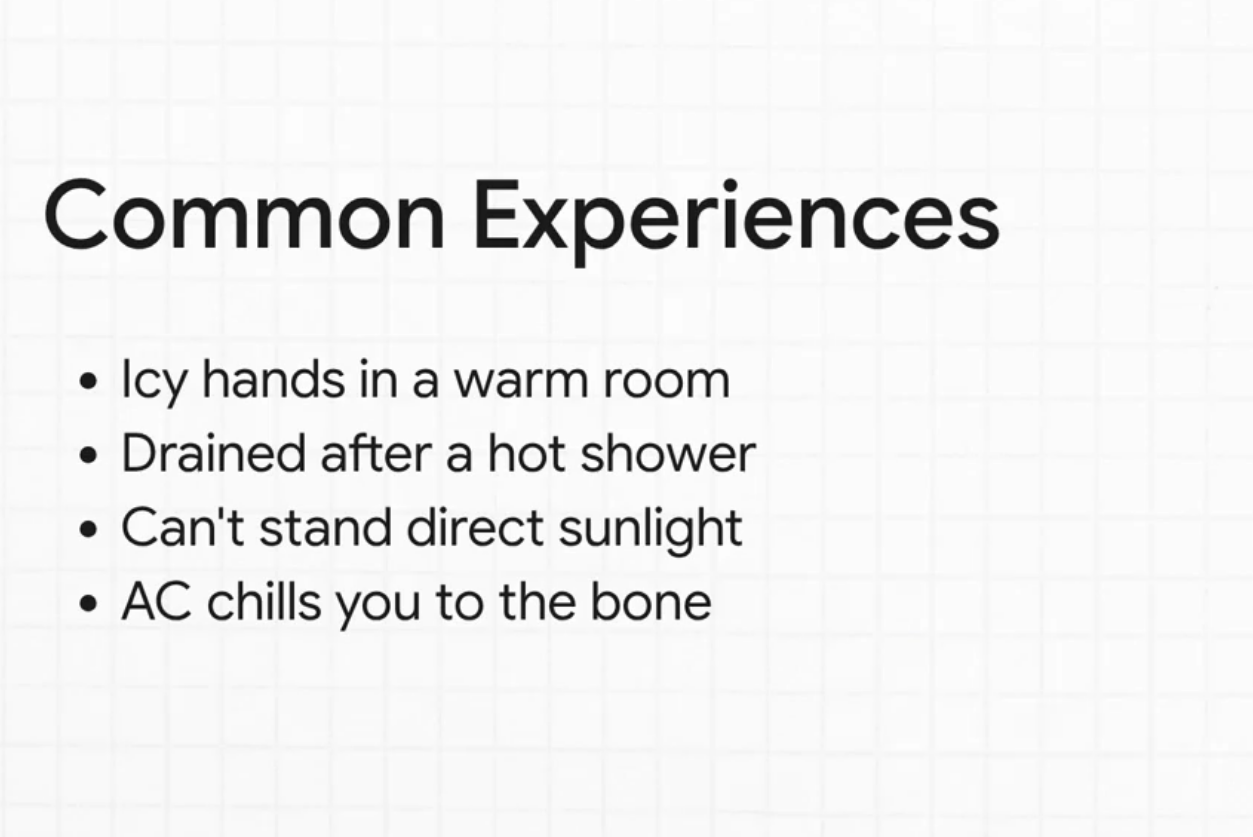
If you’re nodding along, you’re not alone. And here’s the key: this isn’t about being picky or high maintenance. These sensations are important signals from your body, warning lights that your internal thermostat, the system that’s supposed to keep your temperature just right, is struggling.

1
Body's Control System
The ANS at Work
So what’s really going on? Let’s pull back the curtain.
The main player here is the autonomic nervous system, or ANS, think of it as your body’s autopilot. It runs 24/7 in the background, managing heart rate, digestion, and, yes, body temperature. The ANS is the master regulator.


When it’s balanced, it works like a perfectly tuned thermostat: when it gets hot, your body cools down; when it’s cold, it keeps your core warm. But when that system becomes dysregulated, things start to misfire. Heat can cause blood pressure to drop, making you feel faint and tired, while cold can trigger overreactions that leave your hands and feet icy and numb.
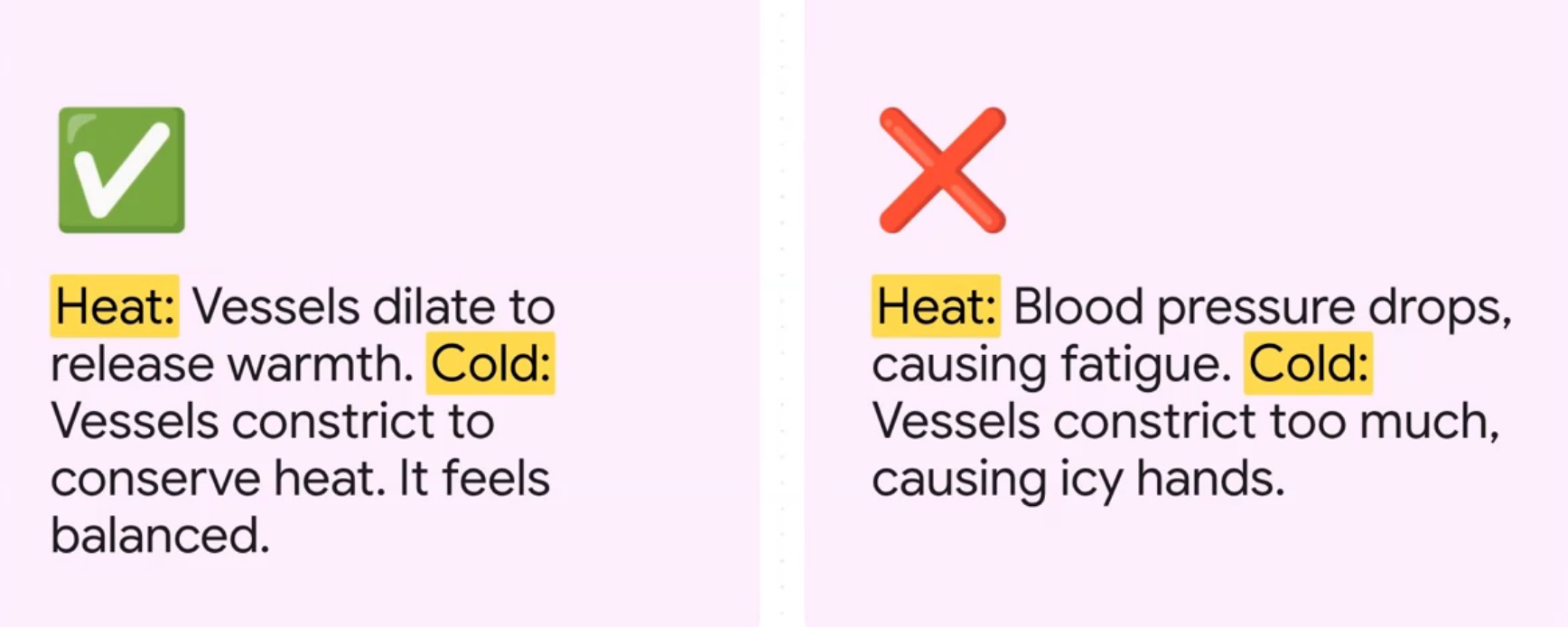
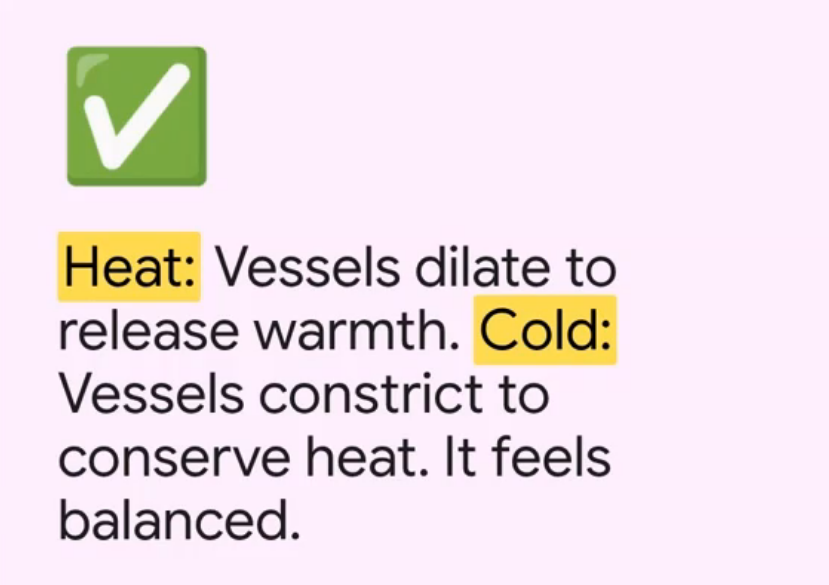
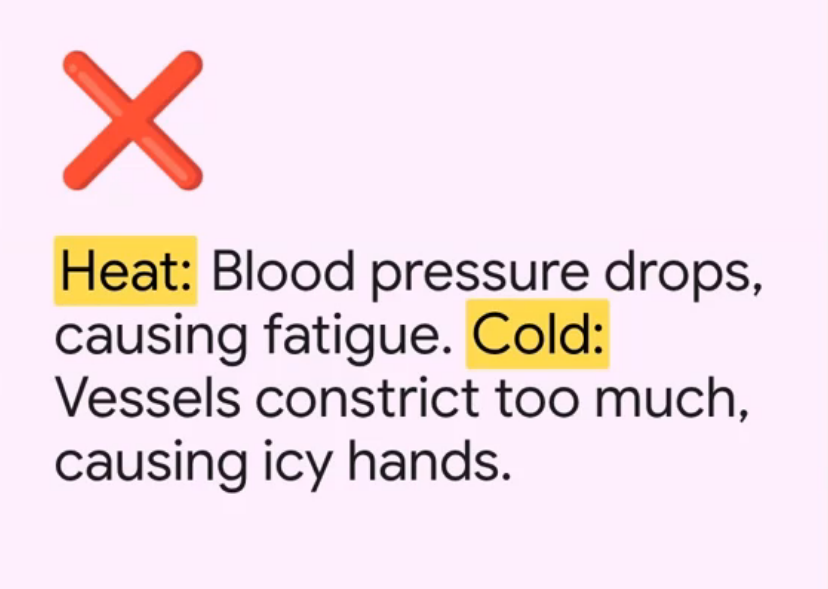
2
Cellular Power
Energy & Blood Flow
But the ANS doesn’t work alone. Two other major players are part of this story: energy and blood flow.
To understand temperature control, we have to think small, really small, down to the level of the cell. Inside every cell are mitochondria, the tiny furnaces that burn fuel to produce both energy and heat (Picard et al., 2018 PubMed).

So, why do we sometimes feel that deep internal chill? There are usually two main culprits.
- If you’re dealing with chronic stress or recovering from illness, your mitochondria can slow down, producing less heat like someone turned down your internal dimmer switch.
- If your circulation isn’t strong, the warmth your cells do create can’t reach your hands and feet (Mortensen & Saltin, 2014 PubMed).
Put those together, and you get that familiar cold-from-the-inside-out feeling.
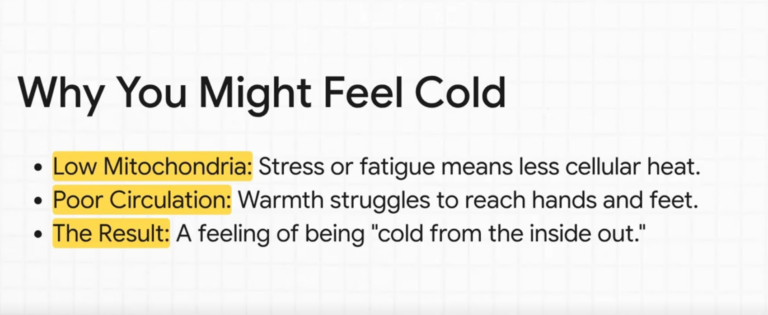
3
Inflammation
Immune System Signals
But that’s not all. The immune system can also interfere with temperature control. Deep in your brain, the hypothalamus acts as the control panel for your body’s thermostat.
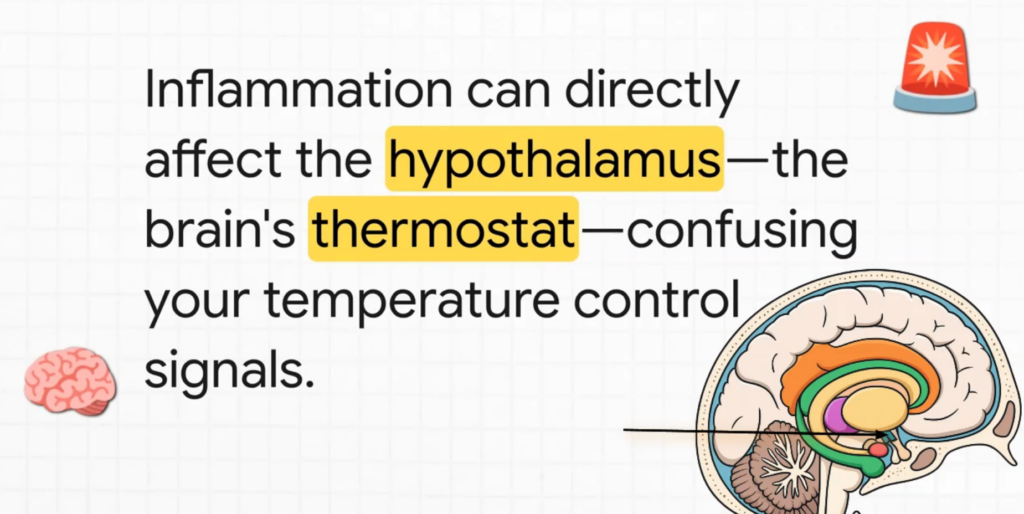
When inflammation activates your immune system, it releases signaling molecules, cytokines and histamines, that can confuse this control panel (Dantzer et al., 2008 PubMed).
Those molecules act like false alarm bells, causing heat waves, hot flashes, or night sweats. It’s a clear example of how the immune and nervous systems are in constant communication, and how crossed signals can throw the entire thermostat into chaos.
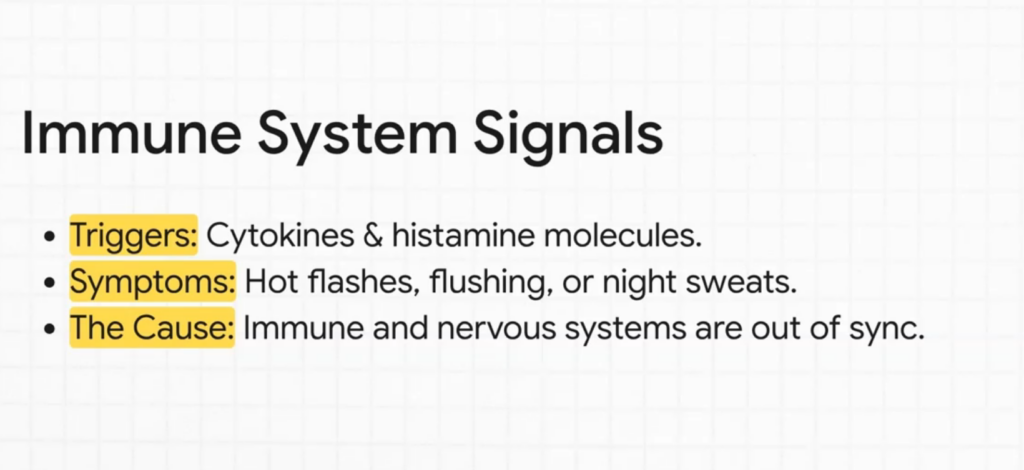
4
The Wider Network
Stress Guts & Hormones
Now, let’s layer in a few more players: stress, gut health, and hormones. Each plays a role in your body’s internal climate.
Gut inflammation can send mixed messages up to your brain, disrupting regulation (Foster et al., 2021 PubMed). Hormones, especially thyroid hormones, act as the gas pedal for metabolism, while stress hormones like cortisol can completely derail the process (Bianco & Kim, 2006 PubMed).

Even emotions matter. During a classic fight-or-flight response, the body reroutes blood flow, causing chills or heat surges during moments of stress (Zaccaro et al., 2018 PubMed).
Here’s what’s important to understand: if you experience these temperature swings, they are real, physical, and measurable. They’re not psychological. They’re the result of a complex interaction between multiple systems, all trying to keep the body balanced.

5
Finding Calm
How to Re-regulate
So what can be done?
The first step is to change how you think about it. It’s not a weakness or personal flaw. It’s your body doing its best under strain. Your system isn’t broken, it’s working overtime to keep you safe.

To help your thermostat reset, the goal is to send signals of safety to your nervous system. Calm, deep breathing tells the body it’s okay to relax. Consistent daily routines create predictability, which the nervous system loves. Gentle exercise helps circulation. Nutritious food fuels the mitochondria your internal furnaces.
Each small action supports balance and helps the nervous system move out of high alert.

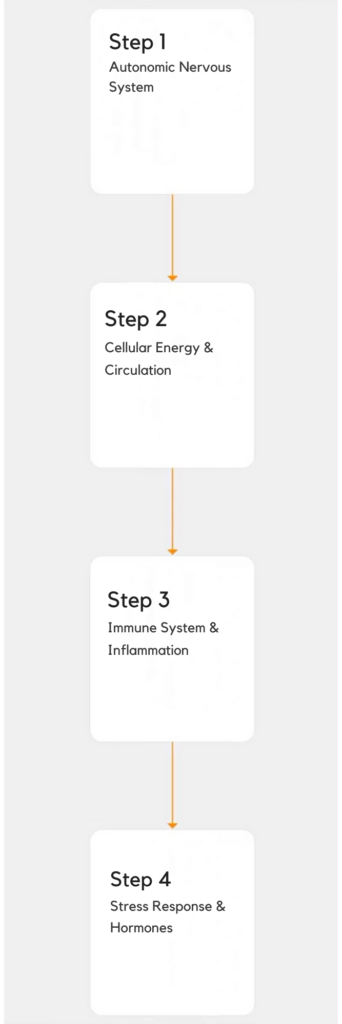
And here’s the takeaway: the goal isn’t to fight against your body, it’s to help it return to calm. When your nervous system feels safe, your body naturally remembers how to stay comfortable and balanced, no matter what the thermometer says.

Do You Have Dysautonomia?
Take our quick and comprehensive symptom assessment to find out if your symptoms align with dysautonomia and receive personalized insights.
What causes some people to feel unusually cold or hot compared to others?
Temperature sensitivity arises from differences in autonomic nervous system regulation, mitochondrial energy output, and circulatory distribution. When the autonomic system becomes dysregulated, it mismanages blood flow and heat exchange, creating sensations of coldness or overheating.
How does chronic stress affect body temperature?
Chronic stress alters autonomic tone and shifts the body toward a “fight-or-flight” dominance. This reduces blood flow to extremities and suppresses mitochondrial efficiency, decreasing heat generation and contributing to cold intolerance.
Can inflammation change how the body regulates heat?
Yes. When inflammation activates the immune system, cytokines and histamines interact with the hypothalamus, the brain’s thermostat, confusing temperature set-points and causing heat waves, chills, or night sweats (Dantzer et al., 2008 PubMed).
What role does the thyroid play in temperature balance?
Thyroid hormones control metabolic rate, essentially the speed of the body’s energy and heat production. Low thyroid activity slows metabolism and reduces core heat, while excessive thyroid output can cause overheating.
Why are my hands and feet cold even when the room is warm?
When the body is under stress, blood flow is redirected away from the skin toward internal organs. This protective response, controlled by the sympathetic branch of the ANS, leaves extremities cooler to preserve core temperature.
Can gut inflammation influence temperature regulation?
Yes. The gut-brain axis transmits inflammatory and stress-related signals through neural and immune pathways. Disturbances in this communication can indirectly alter hypothalamic regulation of temperature.
What practical steps can support a stable internal thermostat?
Evidence supports interventions that signal safety to the nervous system: slow, rhythmic breathing, gentle physical activity, and consistent routines enhance parasympathetic tone and circulation. Nutrient-dense foods provide mitochondrial fuel, supporting steady internal warmth.
Read More Articles
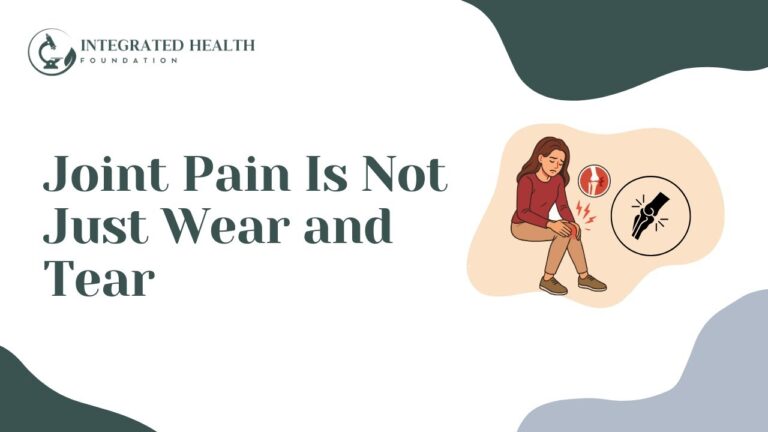
Joint Pain Explained: When Inflammation Becomes a Systemic Signal
Home Articles Joint Pain The Systemic Roots of Joint Pain Joint pain is not merely a mechanical issue of cartilage wearing down, it is often a systemic signal of deeper biological stress. Emerging research on systemic inflammation and joint pain reveals the interconnected roles of the gut, mitochondria, and nervous
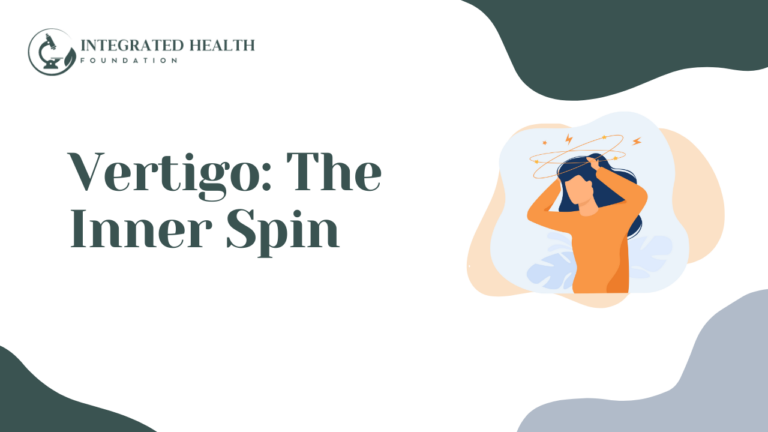
Vertigo: Why the Nervous System Causes Chronic Dizziness (POTS, Dysautonomia, Chronic Illness)
Vertigo is not simply a balance problem, it’s a sign of deeper physiological dysregulation involving the vestibular system, blood flow, gut-brain axis, and stress response. This article explores how inflammation, posture, and autonomic imbalance contribute to dizziness and offers insight into restoring internal balance.
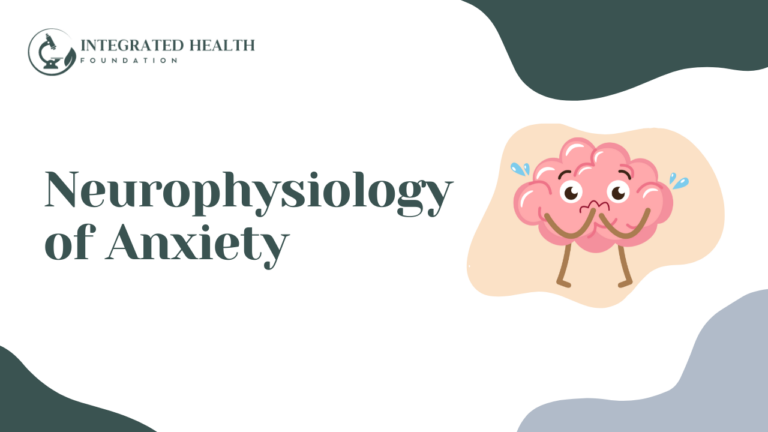
Why You Can’t “Just Calm Down”: Chronic Anxiety (It’s Not Just In Your Head!)
Chronic anxiety is more than an emotion, it’s a full-body state of dysregulation involving the nervous system, mitochondria, and stress hormones. Learn how overactive brain circuits, gut imbalance, and energy metabolism interact to sustain anxiety, and how retraining the body restores calm regulation.

